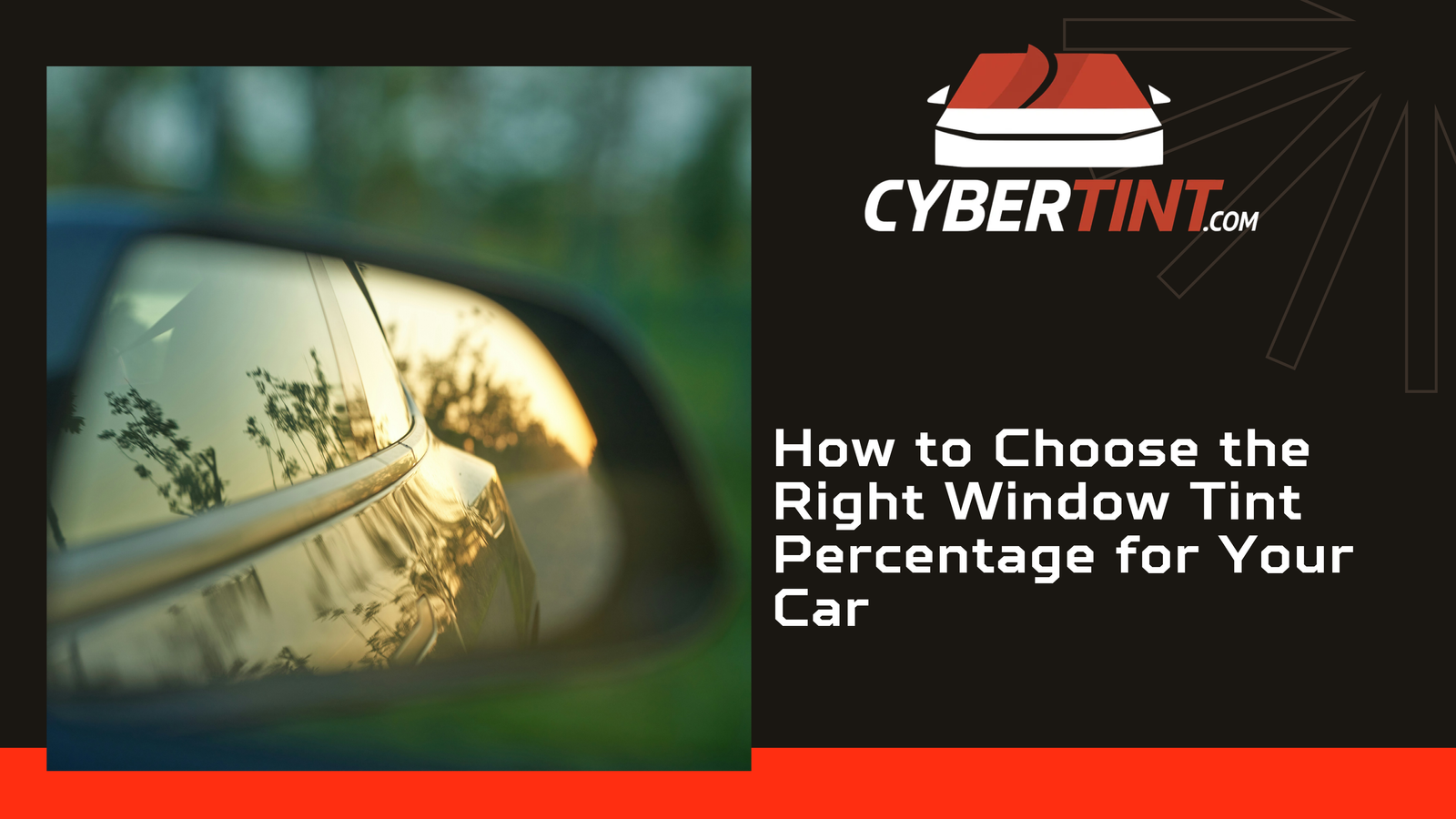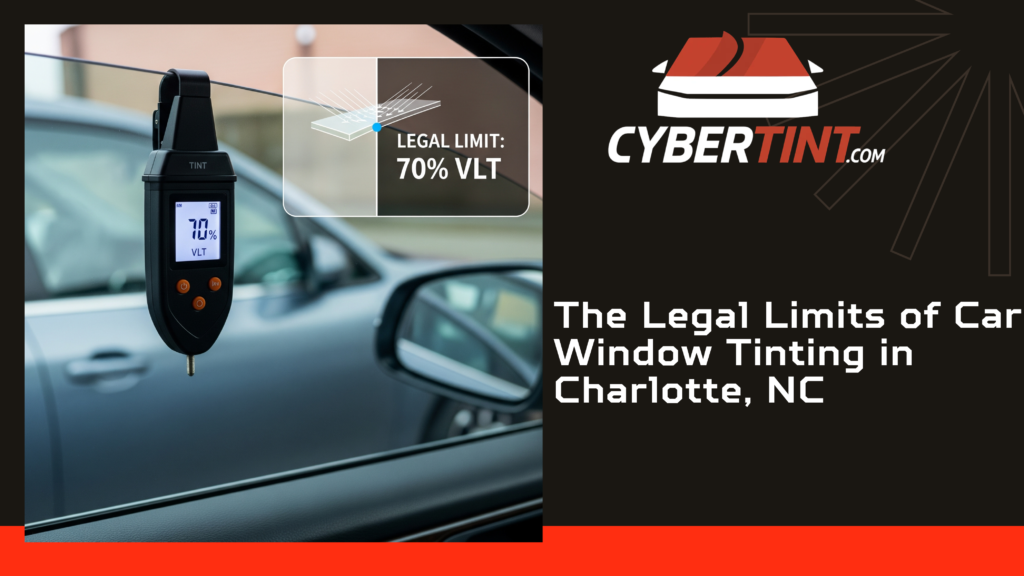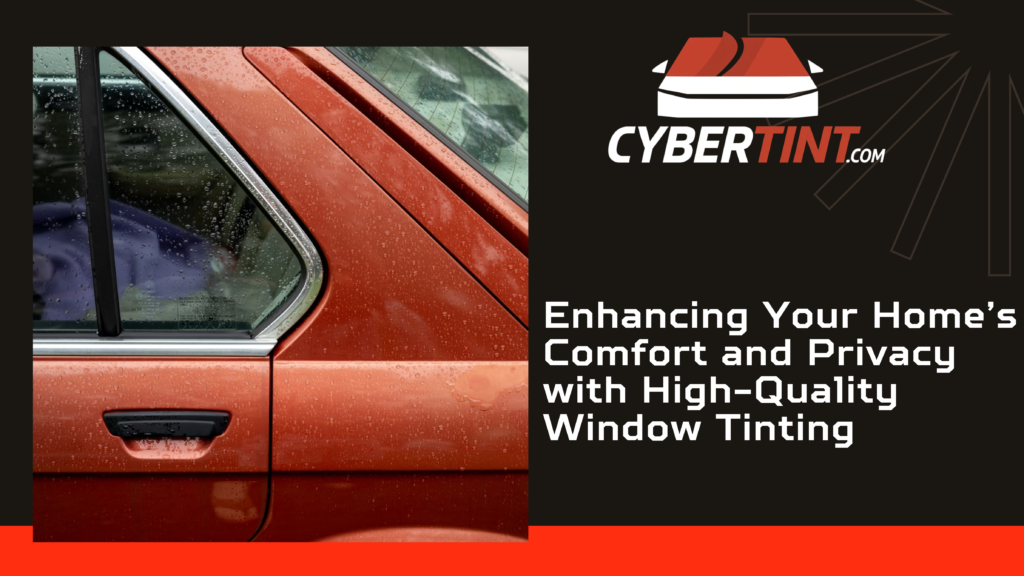When it comes to upgrading your car’s appearance and comfort, few modifications offer the same impact as window tinting. But tinting isn’t just about looks; it can also enhance privacy, reduce heat, block harmful UV rays, and even protect your interior. One key decision you’ll face during the process is choosing the right window tint percentage.
Understanding tint percentages is essential for staying compliant with the law, achieving your desired level of privacy, and maximizing driving comfort. In this guide, we’ll break down what tint percentages mean, how to select the best one for your needs, and the most important factors to consider before installation.
What Is Window Tint Percentage?
The window tint percentage refers to Visible Light Transmission (VLT), the amount of visible light allowed through your car windows. A lower VLT percentage means a darker tint (less light passes through), while a higher percentage means a lighter tint.
For example:
- 5% tint (also known as limo tint): Very dark, allows only 5% of light through
- 35% tint: Medium darkness, a popular legal option in many states
- 70% tint: Very light, offers some UV and heat protection without much shading
Common Tint Percentages and Their Uses
5% Tint (Limo Tint)
- Extremely dark, offers maximum privacy
- Commonly used on rear windows in limousines
- Illegal on front side windows in most states
- Reduces glare and heat significantly
20% Tint
- Dark enough to provide privacy, but you can still see through it
- Popular for rear passenger windows
- May or may not be legal on front side windows, depending on local laws
35% Tint
- Offers a sleek, stylish look
- Balances visibility, privacy, and heat reduction
- Legal in many states for front and rear windows
- Common choice for sedans and SUVs
50% Tint
- Provides modest heat and UV protection
- Offers some privacy while maintaining high visibility
- Legal almost everywhere
- Ideal for those prioritizing visibility over darkness
70% Tint
- Very light tint, often factory-installed on windshields
- Offers UV protection without significantly darkening the windows
- Legal for the windshield and front side windows in most areas
Factors to Consider When Choosing Tint Percentage
1. State Laws and Regulations
Every state (and some countries) has specific laws regarding window tint limits, especially for the windshield and front side windows. Always check your local regulations to avoid:
- Fines or citations
- Mandatory removal of illegal tint
- Trouble passing inspections or selling your car
For example:
- California allows 70% VLT on front windows
- Florida allows 28% on front and 15% on rear side windows
- New York mandates at least 70% VLT on all front windows
2. Privacy Needs
If you regularly park your car in public spaces or carry valuables, a darker tint like 20% or lower may deter theft by limiting visibility. However, always balance your need for privacy with local legal limits.
3. Climate and Heat Reduction
Live in a hot or sunny area? Darker tints (20% or 35%) can block more sunlight and reduce interior temperatures significantly. High-performance films with ceramic or carbon materials also block heat without being very dark, great for cooling without visibility loss.
4. Driving Visibility and Safety
Darker tints can impair visibility during nighttime driving or in low-light conditions. If you frequently drive at night or have vision issues, lighter tints (35% or above) may be safer.
5. Aesthetic Preference
Different tints offer different visual appeal. Many drivers prefer the clean, modern look of 35% tint, while others love the bold privacy of 5%. Choose a tint that matches your vehicle’s style and your taste.
6. Type of Tint Film Used
There are several types of window tint films:
- Dyed film: Budget-friendly but fades over time
- Metalized film: Reflects heat, but may interfere with GPS/radio
- Ceramic film: Premium option with high heat rejection, clear visibility
- Carbon film: UV-resistant, non-reflective, and durable
High-quality films often perform better even at higher VLTs, allowing you to stay legal without sacrificing comfort.
Professional Installation vs. DIY
While DIY tint kits are available, professional installation offers:
- Better results and no bubbling
- Warranty and legal guidance
- High-performance film options
- Precision application for a clean finish
A trusted tint professional can help you choose the perfect percentage based on your goals, budget, and local regulations.
Final Thoughts
Choosing the right window tint percentage for your car is about more than looks; it’s a decision that affects privacy, safety, comfort, and compliance. By considering local laws, personal needs, and tint film quality, you can select the ideal VLT that enhances your driving experience without getting you into trouble.
Whether you’re going for sleek style or sun protection, there’s a perfect tint level for every driver. Just make sure it’s done right and legal. Contact us today!




